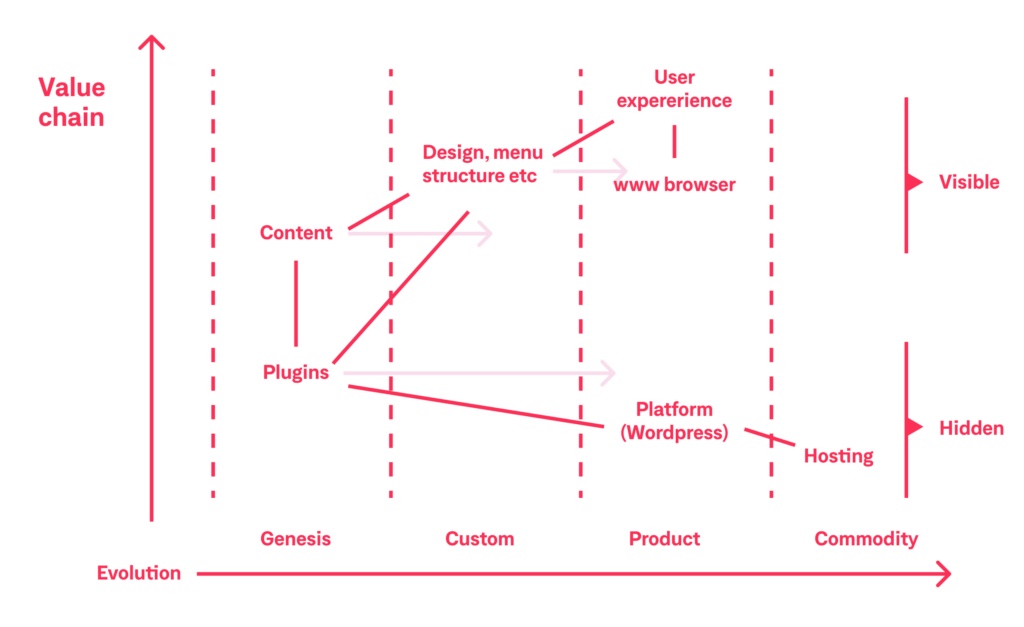In the previous article, I talked about the Wardley map and how it helps companies better predict the future and navigate toward success. This time, I had no other choice but to illustrate how to use this great tool to your advantage.
Before we get going, it is necessary to illuminate on the two concepts: business architecture and architecture components.
The first one – business architecture – represents a system drawn primarily to support the organization’s strategic decision-making. A system that is expensive and difficult, if not downright impossible to change later. This so-called business architecture is built using architecture components.
Architecture components are, so to speak, the building blocks of this system. Vital functions and active elements made of minor systems, and modules, but also resources, services, and assets. Long story short, these are all coherent, dynamic parts that play a crucial role in the way the system operates as a whole.
Using Wardley’s strategy map – in addition to considering other factors like business, political and economic aspects – could be paramount to claiming a higher degree of control over how the future pans out. Instead of just remaining in a theoretical realm, let’s make an example most of you could relate to. That of what Wardley’s map of building a website would look like.

If you just glanced over an illustration, let’s move slowly. There are two axes at display here.
The vertical one shows the visibility of the components – whether they are evident to the user (e.g. homepage) or if they are hidden in the background (like web hosting). On the horizontal axis you’ll find the maturity of the components. Looking from the left to right, you’ll find the components transitioning from the early stages of evolution (left) to the well-established service that does not require any configuration (right).
The horizontal arrows indicate the evolutionary nature of each component on the timeline. It shows how fast they evolve over time as our website project matures.
This website illustration is an invaluable resource for both decision-makers and implementers. It can serve as a strong communication tool that can capture the attention of decision-makers, helping them to make informed, correct decisions with ease. Furthermore, it provides an insightful look into the different stages of the future. This allows all parties involved to access key information quickly and better communicate needed actions. All of these features make Wardley map an essential tool for any organization looking to maximize its stride in a rapidly changing environment.
Since 2021, Net Group has been leveraging the Wardley map methodology to plan and implement customers’ technology projects. Our customers have certainly enjoyed the tangible benefits of our approach. The integrated use of the Wardley map, among other tools, has proven reliable in supporting their organization’s growth and development.
If you have any further interest, please contact me: pr*********@******up.com
Additional sources:
Similar insights

Smart Workflows: AI Tools and Tips for Busy Leaders
16/12/2025
Supply Chain Attacks: Rethinking Third-Party Trust
10/12/2025
Choosing the Right Tech Stack in Uncertain Times
25/11/2025
How to Pitch and Get Your Ideas Approved at Work
12/11/2025
12 AI Cyberattacks That Made CEOs Very Cautious
21/10/2025
14 Books Smart Tech Leaders Are Reading This Fall
07/10/2025
Protect Your Crown Jewels: The Heart of Your Cybersecurity
15/09/2025
How Renown Business Executives are Using AI?
12/08/2025
Think You’re Secure? PEN Testing Will Tell You
15/05/2025
Let the success
journey begin
Our goal is to help take your organization to new heights of success through innovative digital solutions. Let us work together to turn your dreams into reality.